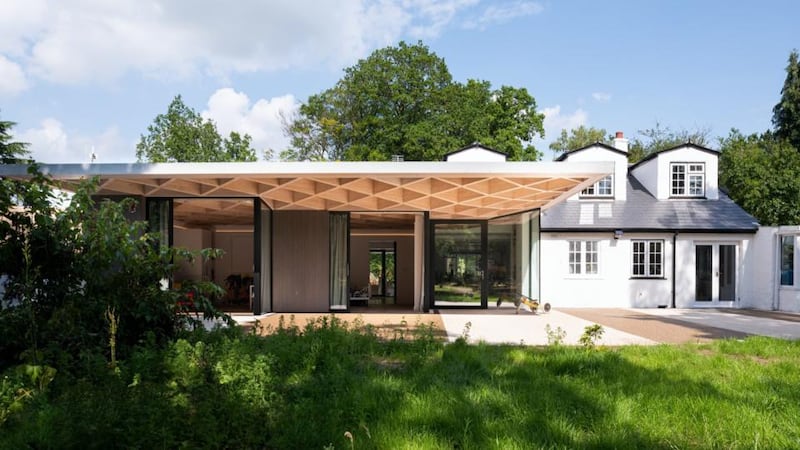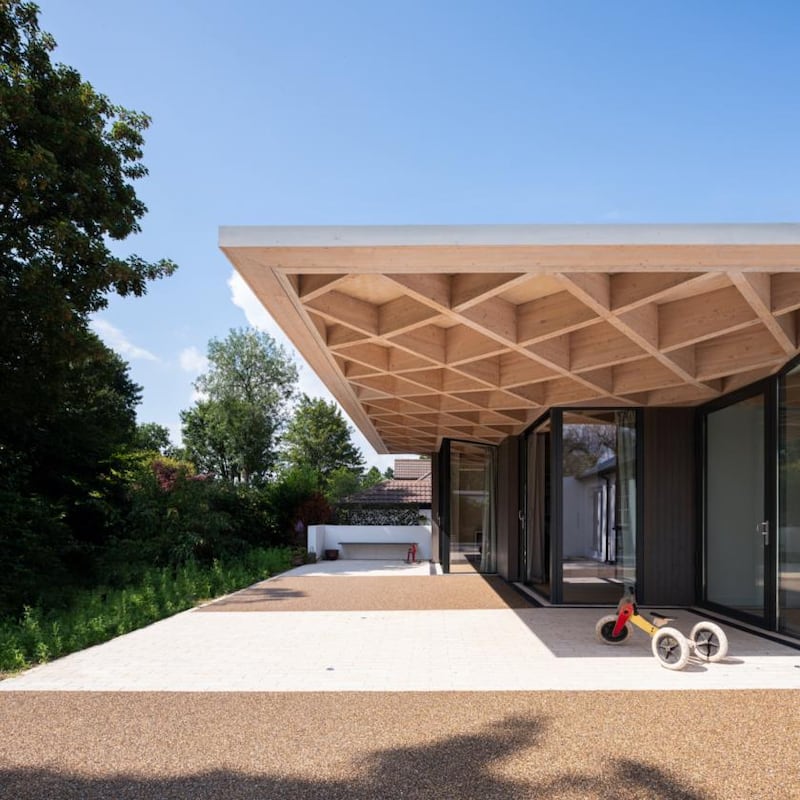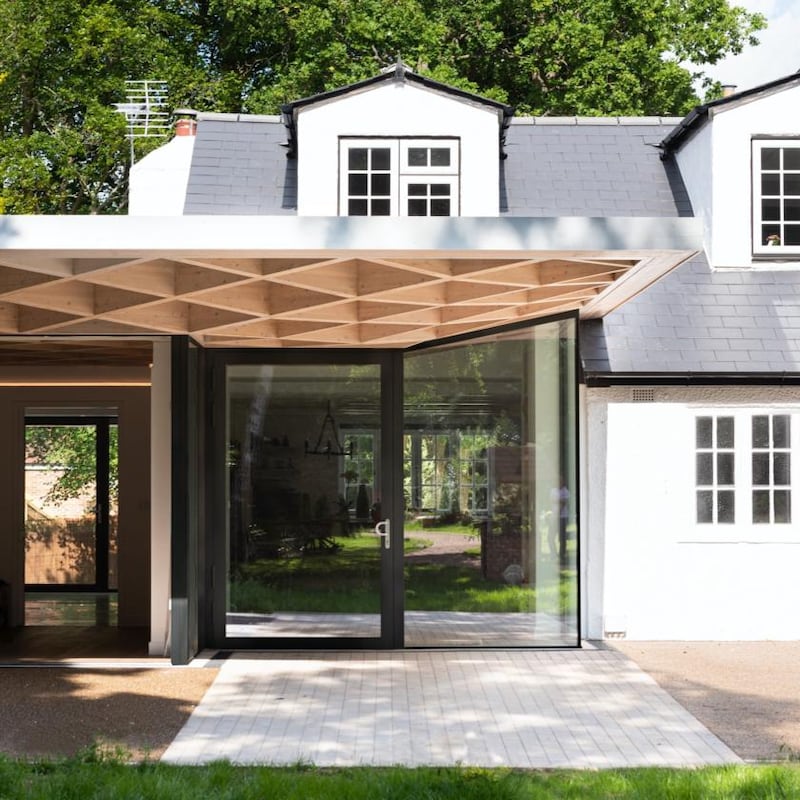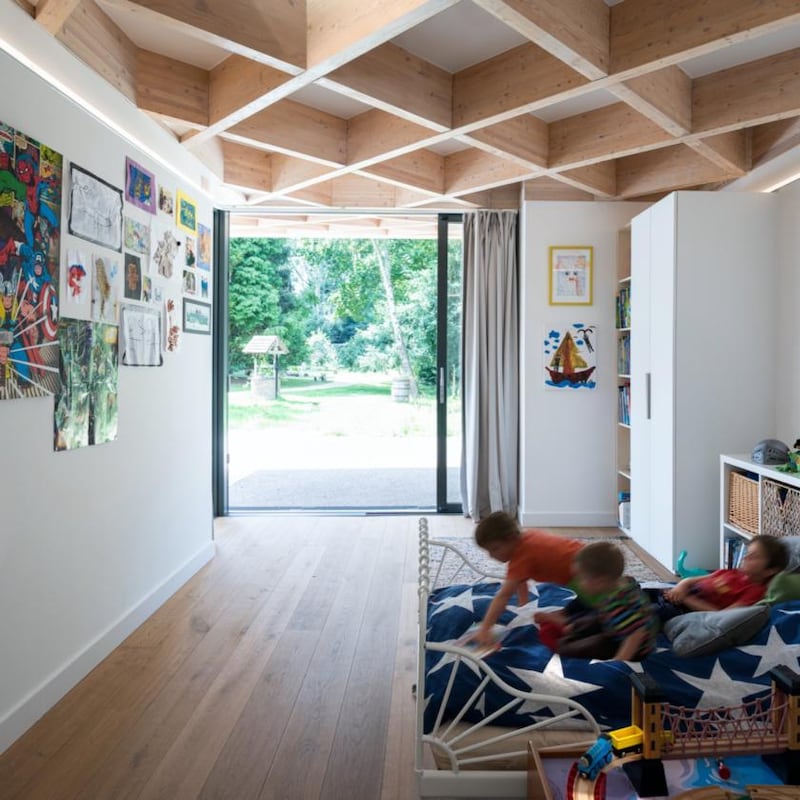For people in need, sometimes a helping hand can literally be the most practical solution. A construction firm and a community demonstrate how to get much-needed homes for such families completed.
For two living with Duchenne Muscular Dystrophy (DMD), a terminal muscle-wasting disease, a helping hand, in the form of friends in construction and their wider communities, demonstrated solidarity and very practical support to beleaguered parents.
Undertaking any building work is arduous, however deep your pockets may be, but trying and undertake a project against the clock while emotionally distracted by a chronic medical diagnosis takes stress levels through the roof.
By coming together to renovate and extend their home, specifically designed to the children’s ever-increasing needs, one construction firm demonstrated support by giving of its skillset to work together to get a challenging project over the line.
Fans of the TV show Grand Designs may have seen a recent episode chronicling the building of a home for Theo and Oskar Taussig, two boys with DMD, and their parents, Nick and Klara; the Taussigs' home was recently shortlisted for its UK-based House of the Year competition.

Upon diagnosis, the family had moved out of London a couple of years ago to try and better accommodate their sons’ needs.
They purchased a detached cottage on a larger site in the hope of extending and converting it to make it accessible before they became almost fulltime wheelchair users. At the same time, by running 20km a day, Nick was trying to raise the funds to make it happen. He also ran an architectural competition to help map out the best way to do this. The Tigg + Coll practice won the competition,
With a blueprint to follow, Taussig had a bigger problem to surmount; the cost of the works. There remained a vast chasm between what he wanted to do and what he could afford to do. Anyone that has recently survived a retrofit or new build will understand this disconnect.
He got a lucky break. One morning over breakfast, Sara Caplan-McCall, godmother to the Taussigs' youngest, mentioned his near marathon-long runs to her husband, Belfast-born Peter McCall, who is UK construction director of Sean Mulryan's Ballymore Group (ballymoregroup.com).

Nick was getting up some mornings at 3am to do his daily 20km run to raise £100,000 (€120,000) for this conversion, says McCall. “It was an impressive sum but it just wasn’t doable,” he says. Before joining Ballymore more than a decade ago, McCall had run his own construction management company for 15 years. “I knew what the bills would be.”
This was a genuine case, says McCall, who went to his boss Mulyran to ask the question: “Would you have an objection to me talking to our staff and supply chain to see what we could do for these kids?”
'It has been a race against time to get the family in'
The Co Roscommon-born founder of the internationally successful development firm did not hesitate. The construction company donated its immense skill range and expertise to help out in a really practical way.
Mulryan, whose current schemes in Dublin include the mixed-used developments at St James’s Gate in Dublin 8 and Dublin Arch, adjacent to Connolly Station in Dublin 1, offered time as well as resources including a full-time site manager and design services.
“He wanted us to be involved and gave me the room to work with our supply chains,” says McCall. “Everyone on the site was a father. All to a man stepped forward,” McCall says.

It was a difficult and awkward job that included having to drive piles into the ground to support the foundation. The single-storey extension, about 92sq m (1,000sq ft), almost doubled the size of the property and was constructed using slabs of pre-formed concrete, a method more typically used on multi-unit and office developments. This was supplied by Dutch firm Byldis, who also made the floor to ceiling glazing.
When you factor in staff time and physical construction McCall estimates the job cost between £450,000 and £500,000 (about €528,000-€586,000 more than four times Nick’s fundraising target).
Most of the money was spent on the extension and construction was done in 2019, pre-Covid. A novelist and film producer, Nick also made a documentary about the boys, A Space in Time, which was released last year.

Another couple living with DMD are Paula and Padraic Naughton, both nurses, who live in Co Roscommon and wanted to create a similar sense of home for their three sons – twins George and Isaac, and their elder brother Archie – who all have the condition.
Their mission was to build from scratch a home that would accommodate their needs. They started to fundraise in 2014. In this instance it was the local community that joined forces with them to help raise the necessary funds.
The parents set up a trust, Join Our Boys House, and through their many appeals managed to raise a whopping €1.1 million to design and build a massive 920sq m (8,000sq ft), four-bedroom home.
It includes such state-of-the-art equipment as a hydrotherapy pool, the size of a decent swimming pool, which cost in the region of €40,000 to €50,000, and a physiotherapy room, as well as a self-contained apartment for carers, for when the boys will need additional help.
'We are amateurs doing something none of us had done before with a lot of sensitivity required. It has been very difficult'
It was designed by architect and engineer Adam Dybkowski, who worked on a pro bono basis, and project managed by Michael Cleary, the former head of fundraising and recently retired principal of Roxboro NS where he had managed a number of expansions of the school and where the twins attend.
The building is owned by the trust. “It has been a race against time to get the family in,” says Aidan Farrell, a retired businessman and one of the three trustees. The others are David Gleeson, managing partner of accountancy firm RBK Accountants, and Sgt Kevin Sexton of An Garda Síochana.
Compared with the UK project, the costs sound crazy. But when you drill down and consider the cost on a per sq m basis the Roscommon project comes in at just over €1,196 per sq m, which is well below the current construction cost guidelines cited by the RIAI. These show a range from €1,900 to €3,500 per sq m, depending on build type and level of finish; they date from 2019, before the current inflation and supply chain strictures caused by Covid. This makes the undertaking itself impressive for in this instance the contractor Owen Dervin & Company was paid for the works. Building materials were supplied at reduced rates by Thompson Butler Steel, Kildea Concrete and O’Reilly Concrete.

At a community level there were hundreds of volunteers, says Cleary. The local community’s outpouring of goodwill covered everything from tractor runs to cake sales to bigger ideas such a car giveaway supplied by John Keane & Son run through the local Supervalu in Roscommon town. “It’s been monumental how the community rallied around the family. The support has been unquantifiable.”
“When the parents got the news back in 2014, all three kids were still mobile and it was difficult to design for the future,” Farrell explains. “We all wanted the kids to get better and not to have to build the house at all. We are amateurs doing something none of us had done before with a lot of sensitivity required. It has been very difficult.”
Since then, the cost of everything has gone through the roof, he says. “Everything to do with disability seems to come with an invoice that is very expensive. There has been a lot of learning on the job.”
There have also been a huge amount of changes and extras, such as specialist equipment, added.
Despite their remarkable endeavours they're not quite over the line. They still need to find a further €120,000 for the last of the works within the house – and that's before they do the exterior, which amounts to a further €300,000, according to tenders. Donations can be made through its website joinourboys.org
It’s been designed as best we could, says Aidan Farrell. “The house was aspirational. Yes it’s expensive, but would you begrudge them?”











